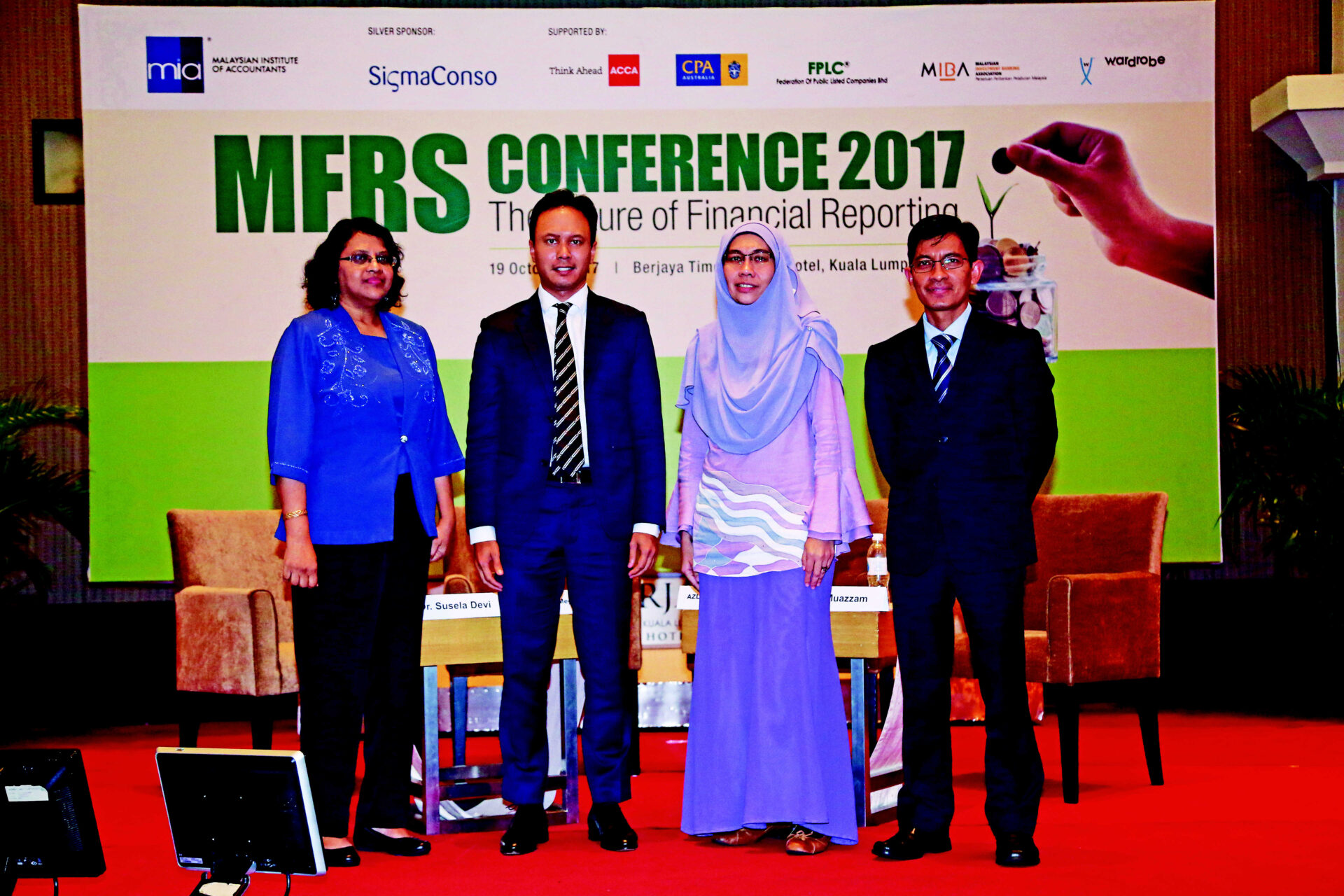How should companies go about applying MFRS 15 Revenue from contracts with customers?
By Abdul Razak Rahman
On 2 September 2014, the Malaysian Accounting Standards Board (MASB) issued MFRS 15 ‘Revenue from Contracts with Customers’ which mirrors IFRS 15 issued by the International Accounting Standards Board. This new revenue standard is effective for the financial period beginning on or after 1 January 2018.
The standard focuses on the performance obligations in a contract, and allocating a transaction price to those obligations by applying the 5-step model prescribed, explained Rasmimi Ramli, MIA’s Head of Financial Reporting & Assurance Department and the moderator for the session on MFRS 15 at the MIA MFRS Conference 2017. She advised that since the standard is applicable to all contracts with customers, it is important to fully understand the scope which the standard covers to eliminate those contracts that are not applicable to MFRS 15.
Identifying a Contract
When identifying a contract under step 1 of the 5-step model, there are a few criteria that must be fulfilled.
One important criterion is whether the collection is probable by establishing the customer’s intention and ability to pay.
For step 2 – identifying the separate performance obligation under the contracts, the key assessment is whether the performance obligations are capable of being distinct and separately identifiable from other promises in the contract.
The next step is to determine the transaction price; other factors to consider apart from the selling price are variable consideration such as rebates and discounts, the financing component, non-cash consideration as well as consideration payable to customers. Once the transaction price has been determined, it is then allocated to each performance obligation.
The final step in the 5-step model is the revenue recognition. Revenue can only be recognised over time if it meets either one of the three criteria prescribed in the standard, failing which it is to be recognised at a point of time.
The disclosure requirement of MFRS 15 is also important. Apart from disclosing details regarding the contracts with the customers, other disclosure requirements include significant judgements used in applying the standard, assets recognised from costs to obtain or fulfil a contract and any practical expedient in implementing MFRS 15.
The Implementation Journey – Where do we stand?
Izzad Shamsuddin, Partner, Audit & Business Advisory, Deloitte Malaysia highlighted that the implementation of MFRS 15 is at various stages, depending on the type of the organisation. Listed companies are at the forefront and the most advanced due to their quarterly reporting requirements, and they are at the gap analysis stage for implementation. Big private companies are generally at the familiarisation and education stage whilst other private companies are lagging behind. However, the awareness is encouraging evidenced by the increase in the number of queries and close sessions requested by clients.
Irvin Menezes of PwC Malaysia and Project Chair, MASB MFRS 15 Working Group observed that the implementation stage also depends on the type of the industry. Companies within the telecommunication industry for example, as one of the most likely affected industries, are in the advanced stage of implementation. In the case of the telcos, due to the sheer size of their customers, systems customisation is important to support the implementation as part of their global roll-out of MFRS 15. Irvin also added that MFRS 15 is one of a few standards that conceptually is different and comprehensive, as it does not only affect the financial reporting, but also has strategic implications across the business.
Tips for Success
“The implementation of MFRS 15 is a journey for the whole organisation, and not finance alone,” cautioned Izzad on the recommended approach in implementing MFRS 15. He added that steps 1 to 3 of the prescribed 5-step model involve deal makers within the organisation whilst finance only comes in at steps 4 and 5. Educating and understanding the implications of MFRS 15 to the business, is therefore key, not only for finance but also for other business functions within the organisation.
The next step is to look at the existing processes and map it to the requirement of MFRS 15 and at this gap analysis stage, inputs from the deal makers are important. Once the gaps have been identified, they have to be addressed during the implementation stage. The gaps will typically include among others, bringing up IT and systems capabilities to support the implementation as well as any change management. “The challenge is to ensure that the outputs or the end results meet the standard’s requirements,” added Irvin.
Irvin also highlighted the practical issues that need to be considered when implementing the standard. Under step 1 of identifying the contract for example, all the 5 required criteria must be fulfilled and they are all equally challenging. For a contract to exist under MFRS 15, the standard calls for an approved contract and commitment from the respective parties to perform their obligations. However, for contracts with termination clauses, the notion that commitment in the contract exists can then be questioned and challenged. Similarly, there are also situations where contracts are found to be incomplete and lacking important information such as clear payment terms, or complicated contracts that contain ambiguous terms which makes it difficult to identify contracting parties’ rights or establish commercial substance.
Another practical issue in applying MFRS 15 is the identification of a distinct performance obligation in a particular contract. Paragraph 22 of the standard states that ‘At contract inception, an entity shall assess the goods or services promised in a contract with a customer and shall identify as a performance obligation each promise to transfer to the customer either (a) a good or service (or a bundle of goods and services that is distinct; or (b) a series of distinct goods and services that are substantially the same and that have the same pattern of transfer to the customer. The standard further defines distinct as to be able to benefit from the goods and services either on its own or together with other resources; and separately identifiable from other promises in the contract.’ Izzad advised that in interpreting the concept of “distinct”, the benefits derived from the promise to the customer have to be assessed from the customer’s point of view. Therefore, revenue from a contract that has a few distinct performance obligations that are inter-conditional can only be recognised after all the obligations have been fulfilled and the benefits passed on to the customer.
Concluding the session, the panellists reiterated the importance of understanding the standard comprehensively. There are useful publications and reading materials available for guidance in implementing the standard. Engagement across the organisation is crucial, especially with the deal makers and the decision makers, since the responsibility of implementing MFRS 15 does not rest with finance alone. MIA’s Financial Reporting Standards Implementation Committee (FRSIC) is also documenting the implementation issues on MFRS 15 and these will be made available to members for reference in future.






